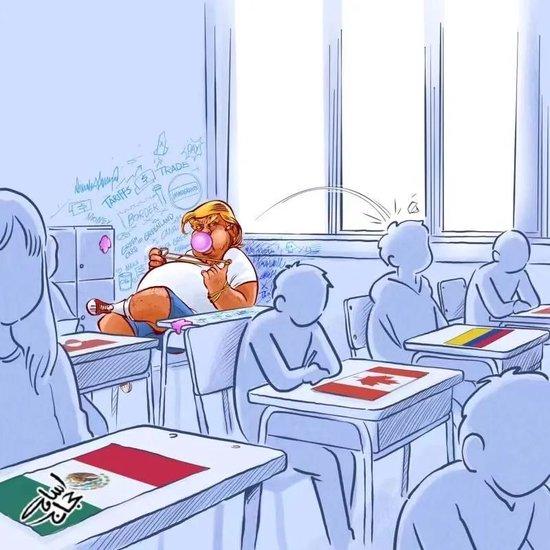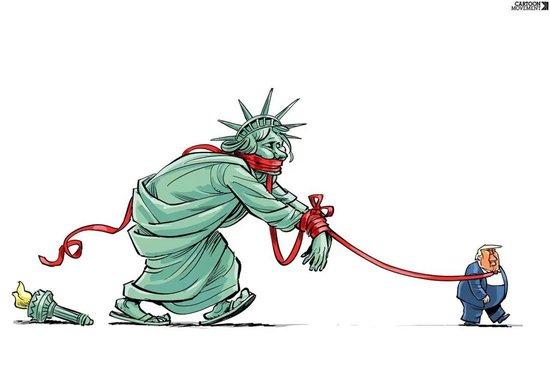


Signs indicate that Vietnam has been a sneak attack on the United States.
On the surface, it seems that after Trump imposed taxes on the world on April 2nd, Vietnam became the second country to reach an agreement with the United States following the UK. However, what we see is:
1. So far, the US and Vietnam have not determined the specific tariff levels;
2. Both sides have said they have joint statements but have not disclosed them externally;
3. Vietnam has remained quite low-key, even to the point of being reticent.
The only public statement appears to be Trump’s self-proclaimed one on social media on July 2nd:
1. The US tariff rate on Vietnam has been reduced from the claimed 46% to 20%;
2. Tariffs on goods transshipped through Vietnam are set at 40%;
3. The US has zero tariffs on its exports to Vietnam.
It’s quite unequal, especially the 40% transshipment tariff, which is known worldwide and mainly targeted at whom?
The devil lurks in the details.
According to the latest disclosure by Politico, Vietnam might have been caught off guard by Trump’s last-minute surprise attack.
According to four sources,
At the time, the Vietnamese negotiation team believed that the agreed tariff rates between the two sides were actually around 11%.
However, when Trump suddenly announced these rates on July 2nd, they were suddenly increased to 20%, shocking Vietnam because…
Vietnamese negotiators had never accepted a 20% tariff rate,”
and Trump also confidently declared that he had reached an agreement with Su Lín, the leader of the Communist Party of Vietnam, during a phone call.
In fact, Trump ignored the issue of tariffs during his call with Su Lín, and “Su Lín did not participate in the initial tariff negotiations.”
According to this report, a Washington lobbyist who works with governments in Vietnam and other Asian countries also expressed that some American officials were astonished by this matter, including groups outside the government that follow the progress of negotiations.
“Trump has deceived everyone.”
The Vietnamese government’s response was described as
“surprise, disappointment, and anger.”
Knowing Trump is unreliable, but not expecting him to be this absurd.
Of course, the White House has different accounts.
An anonymous White House official stated that there was no issue with Trump’s temporary tax increase; the Vietnamese side was already aware of the maximum tax rate before the call. He said:
“My understanding is that the trade teams have almost agreed upon a deal, and it was ultimately decided by the leaders of both sides.”
However, during the Obama administration, Deputy Trade Representative Wendy Carter believed that Trump’s behind-the-scenes maneuvers against Vietnam
“further intensified uncertainty—even if you thought you had reached an agreement, he could change the terms at any moment, and in this case, it was clearly unilateral and public changes made without Vietnam’s participation.”
Therefore, this can also explain why after so many days of announcements of agreements, the two countries have not signed a formal agreement, nor is it clear when the relevant tariffs will take effect or whether they will actually take effect.
Additionally, Vietnam has remained silent.
Only on the day Trump announced his victory did Vietnamese media report on the related agreement, but it did not mention any “agreed” tariff terms, only revealing that
Trump’s conversation with Su Lin led to the “joint declaration of a fair, balanced, and mutually beneficial trade agreement.”
Even this joint declaration has not been officially published yet. According to American media interpretations,
this might reflect Vietnam’s dissatisfaction with Trump’s destruction of the original agreement.
In other words, the fate of the US-Vietnam agreement remains an unknown.
First, it’s important to understand Trump’s “art of trading.”
During his time as a real estate developer, Trump wrote “The Art of Trading,” and I saw that someone summarized that his so-called transactions generally follow four steps.
The first step is to propose astonishing goals, setting conditions far beyond expectations, leaving opponents stunned.
In the second step, aggressive publicity is conducted to strengthen one’s deterrent power through various public opinion campaigns.
The third step involves a series of vacillations in decision-making, creating uncertainty in negotiations to give both parties room for negotiation while not easily agreeing to terms, thus causing anxiety in the other party.
The fourth step forces the other party to compromise, and the victor rejoices at not having received the worst outcome.
The so-called art of negotiation lies in setting an unanticipated condition that leaves the other party without options, subjecting them to fluctuating pressures, and offering suboptimal conditions that the opponent accepts, thereby achieving the desired outcome.
This is a classic tactic of intimidation.
To withstand intimidation, one must be firm and composed, not panicking.
Moreover, it is crucial to guard against sudden surprise attacks.
This could be the most terrifying. There is no trustworthiness involved.
If the facts revealed by “Political News” were true, Trump suddenly changed his stance, originally expecting a tax rate around 11%, he openly announced 20% to force Vietnam to accept.
If Vietnam accepted, then the risk was successfully taken, and the victor would be elated, making a significant profit;
If Vietnam did not accept, apologies are made, but this is a slap in the face, and previous negotiations are forgotten.
Vietnam finds itself in this dilemma. Being caught off guard, there is no way to complain.
Moreover, there’s another issue. Even if you reluctantly accept 20%, what happens when Trump suddenly changes his mind again, now at 40%?
Poor Vietnam. But at 40% of the customs duty rate, if it’s true, how much is regrettable and hateful.
Thirdly, what is the meaning of negotiation?
I saw an article published on July 9th by The South China Morning Post titled “Trump’s Inconsistent Tactics on Tariffs: What’s the Meaning of Negotiation?”
Can these negotiations solve any problems, or are they just part of a reality show for American audiences?
Even if concessions are made to the United States in the “equal tariff” negotiations, it might be futile because Trump has introduced tariffs on specific industries, which are more threatening.
The article does not mention Vietnam as an example, but I always feel that it is more dramatic and representative. As former Assistant Trade Representative Brodman put it,
“(The President’s) actions here are tantamount to completely destroying the credibility of the negotiators.”
How can negotiations proceed then? What good would they be?
Therefore, the final statement in the South China Morning Post article says,
Trump insists that he holds “all cards” in trade negotiations, and countries need to sit down at the negotiating table and accept his demands or face consequences.
Looking ahead, the question is whether there will be a critical point where, after seeing the increasingly excessive repetition by the United States, countries decide to let Trump play alone at the negotiating table.
If the world stops playing altogether, wouldn’t that really mean the United States is singing solo?